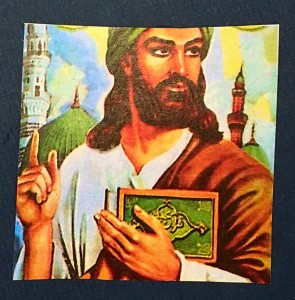https://www.youtube.com/watch?v=HIt0aJ2Lp7g&feature=youtu.be
I chose to create a blog post about Qur’an recitation because oral engagement with scripture plays such an integral role in the Islamic religion and culture. Qur’an recitation is a widely recognized practice among many communities of interpretation. However, as Professor Asani demonstrated in lecture, different regions have distinct recitation styles. The universality of recitation made it a fitting topic for a blog post. Specifically, I decided to hone in on an analysis of the Sells 29 Surat Al-Qadr recitation through the lens of dance and Al-Ghazali’s theory, as is laid out in Quasem’s “External Rules of Qur’an Recitation.”
It makes sense to analyze the conventions of Qur’an recitation through dance because the underlying theme of personal interpretation runs throughout both of them. When one recites the Qur’an, he relies on his emotional experience with the text and interprets that it a performance of remarkable aesthetic beauty. When one dances, a similar relationship is seen, where the dancer must interpret the music in order to generate an authentic and engaging performance. By dancing to a recitation of the Qur’an, I was able to display the ways in which I was affected by the performance. I was able to react to the reciter’s interpretation of the Qur’an, which in turn inspired feelings inside of me that manifested itself in my movement. For further appreciation of the recitation, I find it helpful to consider the main convention set forth by Al-Ghazali.
Two of Al-Ghazali’s main points are that the beauty of the text cannot become lost and reading must take place in a manner that allows the meaning of the text to be absorbed. The beauty of the text is dictated by the style in which it is written, the sound of the words as speech, and the intonation of the reciter. This emphasis on reading out loud underscores the importance of viewing the Qur’an as an oral work, whose beauty and meaning lay as much in the sound of the text as they do in the words themselves. Intonation is meant to improve upon this beauty, as it highlights the important aesthetic elements of the reading to the listener. The manner in which the text is absorbed is also important. It is emphasized that the reader should read at a pace slow enough for the listeners to internalize the message. If not, listeners are not able to appreciate all that the text has to offer and will be unable to deeply ponder the recitation. If all of these conditions are met, the idea is that Qur’an recitation will be both beautiful and enriching (Quasem, 1979, p.34-55).
The Sells 29 version of Surat Al-Qudr follows Al-Ghazali’s theory in that the style is slow and meditative. This allows listeners to both ponder the meaning of the surat, as well as admire its beauty. There is a continuity of tone and rhythm in the recitation, which I believe is responsible for this meditative quality. When considering how to interpret this recitation as movement, the continuity manifested itself in a circular/spiraling motif that is seen throughout the dance. Another aspect of the Sells 29 version of Surat Al-Qudr is the frequent pauses throughout the recitation. This allows for reflection on the words just recited, which is also in accordance with the Al-Ghazali theory. Whenever a pause would occur, the movement also pauses. This reflection may be directed toward God, which is shown in the dane as an upward gaze or open arms, or a more internal reflection, demonstrated by a recoiling of the arms.
Given that each recitation draws from personal experience with the text, each version of the same Surat will sound slightly different. If this dance had been performed to a different version of the Surat, a novel set of qualities would have manifested themselves in the movement.






